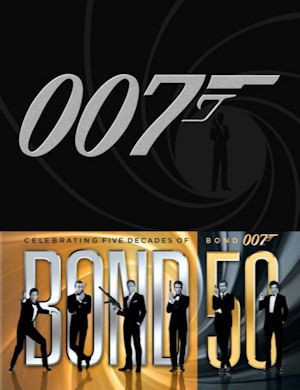The James Bond movies constitute the longest-running film series in the world. The fact that it could last five decades and still go strong is a testament to that. This is something I thought about after purchasing the Bond 50 collection, featuring all of Eon Productions's Bond films on Blu-Ray. Thanks to the incredibly clear high-definition picture quality these movies now have and the extras that go along with them, I have come to admire the series much more than ever. I have relived the most exciting moments of Agent 007's adventures, better appreciated my least favorite Bond films, and learned about how much work went into each movie. This journey through the first 50 years of James Bond in film was definitely an incredible ride.
As I am waiting for the next Bond film expected to hit theaters in 2015, I thought I'd take the time to rank the Bond films from worst to best. The list below reflects my own feelings about each movie and will undoubtedly differ from other Bond fans' rankings. Each entry includes a link to my original review of the film and my additional thoughts after revisiting the film on Blu-Ray. You can consider the following rankings and comments to be my definitive opinion on the first 50 years of James Bond. (Note: The list does not include the 1967 spoof Casino Royale or the 1983 non-Eon Bond film Never Say Never Again, both of which I think are terrible anyway.)
Without further adieu, I now present to you the 23 James Bond movies from 1962 to 2012, from worst to best...
#23
Quantum of Solace (2008)
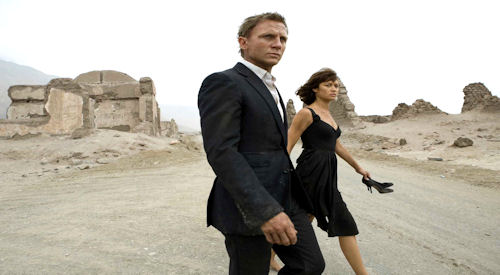
The first time I watched Quantum of Solace in the theater, I was in disbelief. Was this even a James Bond movie at all? It was hard to believe, given that Barbara Broccoli and Michael G. Wilson produced this movie just like many other Bond films before it. In the end, I had to accept the fact that this was a James Bond movie that deviated too far from what Bond fans expect. Some might dislike the lack of gadgets, the somewhat convoluted plot, or the action scenes that are good but seem to come from a non-Bond action movie. For me, however, the biggest disappointment was the villain, Dominic Greene. In contrast to the megalomaniacs of past Bond films whose schemes have worldwide implications, here is a guy whose plot for power and money really involves just Bolivia, one specific country. (To be fair, the villain's plot in Live and Let Die also involves just one country, the United States, but at least it's more interesting than what's in QoS.)
After watching this movie a second time on Blu-Ray, I can say that I like it a little more. Now, this doesn't change my original review of Quantum of Solace (this is true for all of my other Bond movie reviews as well), but I can at least understand the opinions of those who like this movie. It dares to be different in order to be fresh, and the action is actually far from weak. As for Camille, the leading Bond Girl, so what if she and Bond only kiss without any lovemaking scenes? The Living Daylights didn't really have any sex scenes with Bond and the girl either, and not many people complained about that. In any event, Quantum of Solace is at the bottom of my list, for having some admirable elements but not enough.
#22
The Man With the Golden Gun (1974)
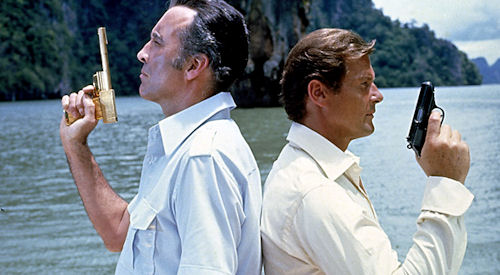
Up until Quantum of Solace came along, The Man With the Golden Gun was my least favorite Bond movie. It's not because it deviated too far from the Bond Formula. Rather, it followed the formula but added too much of one ingredient: humor. I'm not against having humor in the Bond movies, because even the more serious ones may provide a brief funny one-liner from Bond (e.g., "Yes. She's had her kicks." in From Russia With Love) or an otherwise humorous moment (e.g., the x-ray laser camera in Licence to Kill). The problem with TMWTGG is that it delivers plenty of humor that was lighthearted, so that the movie ends up crossing the border into action-comedy. Do we really need, for example, the goofy Sheriff J.W. Pepper on vacation in Thailand or Lieutenant Hip's nieces skilled in martial arts?
The other flaw is its overall weakness. Just look at the final showdown between Bond and the villain, Scaramanga. Instead of an intense fight or an active scheme being foiled, we have a slow shooting match involving stealth in a fun house environment. Now, there is massive destruction of the villain's lair, but the bad guy isn't alive to witness it in horror. Plus, the countdown to total annihilation was started, unexpectedly, by Mary Goodnight, an agent who is so passive and dimwitted with her job that Bond ends up yelling at her at one point ("Just push every damn button, will you?!"). So yeah, this is a low point in the Bond series, but at least there are enough familiar elements to remind us that this is a James Bond movie.
#21
Goldeneye (1995)
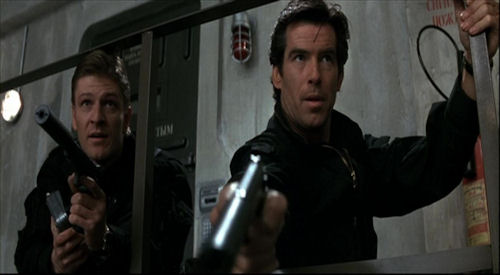
When a film series has a gap of at least two or three years, expectations tend to be high when the next entry finally comes out. Goldeneye, which came out six years after Licence to Kill in 1989, seems to fall somewhat short in my opinion. To be clear, I saw this movie in the theater, but I didn't really become a true Bond fan until 1996 when I watched all of the old Bond movies before rewatching Goldeneye. Even then, I felt something was lacking in Goldeneye compared to many previous Bond movies. After some thought, I figured out what it was: the inadequate amount of adventure.
Usually, James Bond's missions would let him spend all his time in one country in the world or plenty of time in two or even three international locations. Goldeneye involves Bond spying on Xenia Onatopp in Monte Carlo, then moving onto Russia before heading to Cuba. But, of those three places, I thought the parts of the plot in Russia and Cuba felt a bit short. In Russia, it's essentially one long chase towards the bad guys, and in Cuba, it's a side romance before discovering the villain's headquarters. The story moved sometimes, but it slowed down in some places. Aside from that, how come Bond gets a new car from Q but doesn't get to use its gadgets? Oh well. At least the other Bond formula elements, like the girls, the villains, and the action, are there.
#20
Die Another Day (2002)
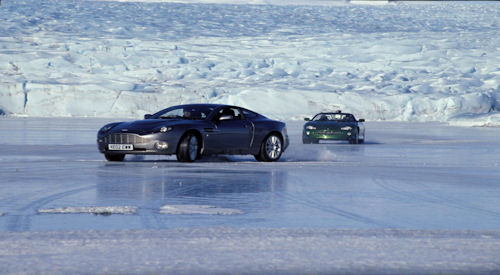
The style of the Bond movies varies along a spectrum where one end is realism and the other end is science-fiction. Die Another Day is definitely at the end of the latter. Yes, Moonraker takes James Bond into space, but that's at least in the realm of possibility. Die Another Day includes two things that seem rather farfetched: genetic alteration to change one's identity and an invisible car from Q's lab. Speaking of things that are fake, here's another: the computer-generated imagery. Not only is it overdone, but it's fake in some places, particularly the scene where Bond surfs and parachutes to safety while avoid a collapsing glacier. It's definitely not a stuntman doing it, as done with previous Bond movies.
But the big problem is the inclusion of many references to all previous Bond movies, given that DAD marks the 40th anniversary of the series. The movie can be fun if you've never seen a James Bond movie, but for us fans, all of those similarities and parallels to prior Bond films are a distraction. I still find myself spotting things that are like what I've seen earlier in the series, like the hall of mirrors in the clinic (similar to the fun house in TMWTGG), a line by John Cleese's Q referencing a famous line from Desmond Llewelyn's Q in Goldfinger, and Halle Berry's bikini designed in the style of Ursula Andress's in Dr. No. Aside from that, there are some things I like about the movie, but I shall point out the one very original element I consider noteworthy: Bond getting tortured, which is shown even during the opening title sequence, before appearing on screen with long hair and a beard.
#19
Live and Let Die (1973)
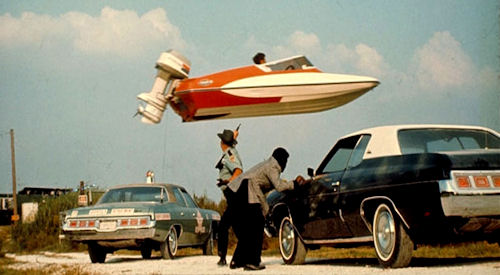
Live and Let Die is not just another of those campy action-comedy Bond movies like The Man With the Golden Gun. It's also a movie that essentially has one foot in the Bond film series and another foot in a different film genre: blaxploitation films starring, made by, and made for African-Americans. At times, Live and Let Die seems like a combination of any other Bond movie plus a movie like
Shaft. I'm fine with that, although I could do without Louisiana sheriff J.W. Pepper. Just because American race relations were a big social issue at the time doesn't mean a Bond film could easily work with a side character like that sheriff.
Though I won't go into the weak elements of the movie, I do want to talk about what I do like. Jane Seymour as the main Bond girl, a Tarot card reader named Solitaire, delivers a nice performance, which was also her cinematic debut. The mastermind villain is OK, but I do like the henchman Tee Hee, the big guy with the metal prosthetic arm, especially in the fight scene with Bond on the train. The action is decent, but is definitely cool when you get to the long boat chase (and the legendary boat jump over the cars). Finally, who can forget the music, particularly George Martin's rendition of the James Bond theme and Paul McCartney's title song, the latter of which reached #2 in the American Billboard Hot 100?
#18
Diamonds Are Forever (1971)

Although Diamonds Are Forever was Sean Connery's return to James Bond after leaving the series for a bit, he does look much older in this one. No longer is he the suave thirty-something that everyone first saw. Here, he puts on a bit of weight as a man entering his forties. But I'm not complaining, given that Roger Moore was already in his forties when he started playing 007. Connery's return is a welcome one, and I enjoy watching him beat Peter Franks to death in an elevator, lie in fear inside a coffin being cremated, drive a car through an alley on two wheels, and destroy an oil rig with a crane. So yeah, the action is decent and enjoyable enough.
Let's also remember that this is yet another one of those action-comedy Bond movies from the 1970s. There are some goofy moments that I don't hate, but certainly lower my rating for this movie, because I like the more serious Bond movies. For example, Bond pretending to be an annoying lab worker checking radiation shields, Tiffany Case insulting a boy at a carnival game at Circus Circus, Bond getting his butt kicked by two women named Bambi and Thumper, and Ernst Stavro Blofeld expressing disgust about marching band music. Really, the only serious moments are those involving the homosexual killers Wint and Kidd. Who can forget that suspenseful theme music playing whenever they appear on screen?
#17
Moonraker (1979)

Thanks to the phenomenal success of
Star Wars in 1977, with its groundbreaking eye-popping special-effects, the decision was made to have Moonraker, not For Your Eyes Only as originally planned, be the next Bond movie after The Spy Who Loved Me. It was a good move, because I'm sure people in 1979 still had great memories of the laser gunfights in Star Wars. I'm not saying that Moonraker's laser effects are better. They are still good enough, so that it's exciting to watch astronauts blast each other with blue lasers outside and inside Drax's space station, just as Bond chases the fleeing villain. This alone makes it better than Diamonds Are Forever, even if both movies are campy and humorous.
The movie is otherwise what you would expect with any Bond film. It does feature the return of the henchman Jaws, who ultimately becomes more sympathetic than before. Other than that, I want to comment on how the film Moonraker is dramatically different from Ian Fleming's novel of the same name, but for good reason. The novel, written in the 1950s, is about an atomic rocket called Moonraker, whereas the film, produced in the 1970s, is about a space shuttle called Moonraker. If you think about it, it would not make sense to adapt the novel faithfully in a decade when the world has already witnessed American astronauts set foot on the Moon. I probably would dislike it if they did, so putting aside the light nature of Moonraker, I give this movie credit for keeping up with the times.
#16
Dr. No (1962)
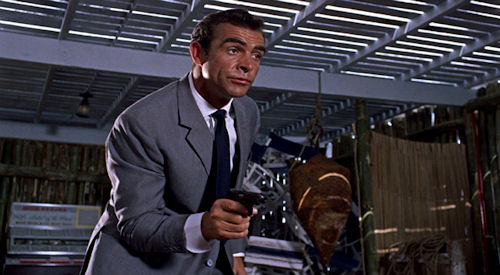
In most film series, the first entry is a good movie. It has to be, or else people won't have a reason to watch a sequel. Whether the follow-up movies are better or worse depends on those particular movies. With the James Bond series that has gone on for five decades, I think you'd be hard-pressed to find a fan who considers Dr. No to be the best one of all, because there are more than 20 newer movies to compare it to. This is why I, a relatively younger Bond fan, rate Dr. No as an average Bond movie, but still a good one.
For one thing, this film introduces many firsts: the young Sean Connery as the suave and handsome spy, the opening gunbarrel sequence, the James Bond theme composed by Monty Norman, the appearances of Bernard Lee's M and Lois Maxwell's Miss Moneypenny, the first Bond Girls (Eunice Gayson's Sylvia Trench and Ursula Andress's Honey Rider), and the villainous Dr. No and his island lair. Basically, it establishes the Bond Formula that would be perfected, modified, and experimented with over the years. In addition, Dr. No is a good movie not as an action movie, but a suspense film with death-defying moments and plot twists. This was, after all, the kind of story that Ian Fleming wrote when he penned his James Bond novels.
#15
A View to a Kill (1985)
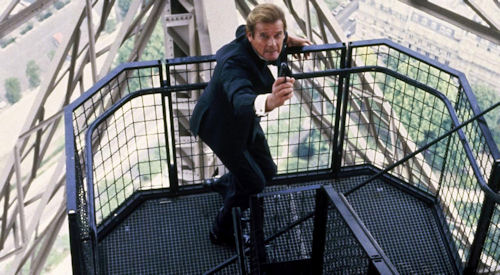
My earliest memories of the James Bond movies, even before understanding what they were about, came from A View to a Kill in 1985. I was maybe about five or six years old when I caught glimpses of a helicopter exploding in Siberia, the title sequence, Bond breathing air from a car tire while underwater, a fire in an elevator shaft, police cars crashing at a bridge, the Main Strike mine flooding, the Zorin Industries blimp, the fight on the very top of the Golden Gate Bridge, the villain's fall to his death in the San Francisco Bay, and a final kiss in a steamy shower. Years later, as an adolescent discovering the James Bond films, I finally watched this movie and ended up liking it (not to mention finally making sense of it).
Many Bond fans are quick to dismiss this movie as weak, in part because of Roger Moore playing James Bond in his late 50s. But I'm more focused on the positive aspects of the movie. The overall tone of this Bond movie (plus the others in the 1980s) is darker than all of the 1970s Bond movies. The action is not that bad, even if Moore might appear a bit slow at times given his age. To top it off, John Barry's soundtrack fits nicely with the scenes in this movie, and Duran Duran's title song rocks, enough to be #1 in the American Billboard Hot 100 and #2 in the United Kingdom's charts.
#14
Thunderball (1965)
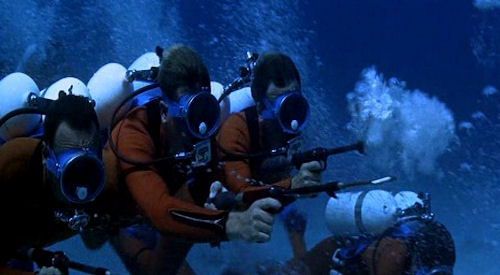
Even before the more recent James Bond adventures started having really intense action, Thunderball is a strikingly violent Bond movie. All you have to do is to watch the climactic underwater fight scene, where men in scuba gear, allied either with Bond or the villain Largo, are shooting harpoons that pierce each other's arms, chests, and whatever other parts are vulnerable to attack. You can literally see those projectiles go right through those men. The same goes for when the henchman Vargas sneaks up towards Bond at a beach, the girl named Domino warns Bond, and Bond shoots a harpoon that nails Vargas to a tree. How the film crew achieved these effects is beyond me, but they're impressive to say the least.
The main reason I don't rate this movie much higher is because a lot of it takes place underwater, and much of the underwater scenes involve transporting nuclear bombs from point A (sunken plane) to point B (villain's yacht), then from point C (hiding place for bombs) to point B (yacht again). That's plenty of time already spent. Otherwise, it's great to have not one or two but THREE Bond Girls: the leading lady Domino, the allied woman Paula Caplan, and the villainous seductress Fiona Volpe. Speaking of ladies, you can't forget the pre-credits fight scene between Bond and a SPECTRE agent who fakes his own death and pretends to be the mourning widow. Not to mention the jetpack and the Aston Martin DB5 shooting jets of water.
#13
For Your Eyes Only (1981)
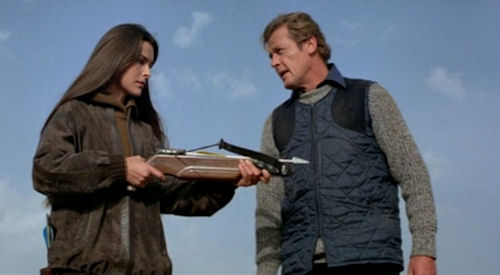
At this point, I am diving into the Bond movies that are above average in quality, all rating 7 or higher on my 10-point scale. I shall start with For Your Eyes Only, a movie that jumps from the science-fiction side of the spectrum (the previous Bond film was Moonraker) to the side of realism. Do not be dismayed by the lack of gadgets in this one, because that's not what defines a James Bond movie. Remember, the key elements are plot and action. There is certainly both in FYEO, and what's nice about it is that both elements are effective even as they are kept simple and down-to-earth.
The villain's plot to sink a British spy ship and retrieve its missile control console may not sound as impressive as the more megalomaniacal schemes in other Bond movies, but there are still worldwide implications. If that device were to fall into the wrong hands, the British navy could be ordered to attack its own country. As for the action, there are plenty of life-and-death moments, including a car chase in Spain, a ski chase in Italy (my favorite scene), and a treacherous mountain climb towards an abandoned monastery. As serious as the movie is overall, there is still a bit of humor. Just wait until the final scene in which British Prime Minister Margaret Thatcher (played by an impersonator) is talking to a parrot by phone, thinking it's James Bond.
#12
The Living Daylights (1987)

Some actors playing James Bond need a few films to sink into the role and get enough appreciation from the fans. Not Timothy Dalton, who prepared for his role as Bond in The Living Daylights by reading Ian Fleming's novels. The results are definitely impressive. Here is a James Bond who is handsome but also cold, tough, and ruthless when he has to be. If you use Sean Connery or Roger Moore as the standard to compare Dalton to, you might be disappointed. But put Dalton alongside James Bond as Ian Fleming envisioned the character, and you got a very good, if not perfect, match.
For me, this movie has a good plot, but really steals the show with action, which does not rely entirely on gadgets. There is an early sequence where Bond uses various features of his Aston Martin V8 Volante, like twin rocket launchers, to flee police in Czechoslovakia. But after that, it's all low-tech action: using a cello case as a sled, a rooftop chase in Morocco, and a gunfight between the Soviets and Bond allied with the Mujahideen in Afghanistan. One possible criticism of the film is that the villain is weak and more ordinary than previous Bond villains. I beg to differ, because in a world where looks can be deceiving, is that really relevant?
#11
From Russia With Love (1963)
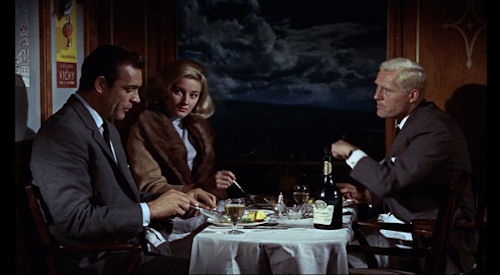
Many Bond films can be described as exotic because of the places around the world where the story takes place. From Russia With Love, the second Bond film, is one of the most exotic entries in the series. I have never been to Istanbul, but from how it looks in this movie, it looks like a gorgeous place with so much history and culture to explore. And it is in this setting that plenty of Cold War intrigue takes place, including Bond and Kerim Bey eavesdropping on a Russian consulate, a gunfight in a gypsy camp, Bond making love to Tatiana Romanova in a bridal suite (while being secretly filmed), and Bond escaping with a Soviet decoding machine.
Like Dr. No, From Russia With Love relies on suspense and plot to engage the audience. The action is there, and it's better than the action in Dr. No. In fact, this Bond movie has one of the best train fight scenes in the series. When Bond and Donald Grant are trying to kill each other, the actors look like they're doing it for real and are willing to do it without stunt doubles (which wouldn't make sense here anyway, because the characters appear close to the camera). As for why I didn't put this movie higher in my list, it's only because there is a version of From Russia With Love that's better than this movie: the original novel by Ian Fleming, which in my opinion is his best one of all. If the movie were daring enough to adapt the book much more closely, it would definitely heighten the tension in the audience (though it might be controversial, too).
#10
On Her Majesty's Secret Service (1969)

On Her Majesty's Secret Service is a James Bond movie that some fans may dismiss or even ignore because of unmet expectations. For one thing, Sean Connery is not in this one. Rather, James Bond is played by George Lazenby, who never played the character again thinking that interest in Bond would just die off. Also, James Bond gets married late in the film (and it's a real marriage, not a fake cover like the Japanese wedding in You Only Live Twice), even though the marriage is very brief. Fans might not like that, because James Bond is supposed to be a bachelor who sleeps around, not to mention a cold assassin. You know what I say? Falling in love makes Bond a bit more human, and Lazenby is probably a better choice to play a gentler Bond than Connery (at least in my opinion).
And if you think OHMSS is not a real James Bond movie because of everything else, think again. The pre-titles scene involving a beach fight is done pretty well. It's the first glimpse of what Lazenby can do as Bond in action. Once Bond discovers Ernst Stavro Blofeld's biological warfare plot, he has to ski all the way down from the mountaintop lodge in order to report back to MI6 headquarters, which provides plenty of opportunity for exciting action. And don't forget the end of the movie, including the bobsled chase and the emotional finale.
#9
Tomorrow Never Dies (1997)
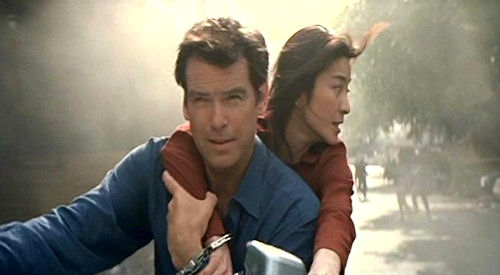
Bond fans may vary in the specific aspects of James Bond that they love the most. While most will say they love the girls, the gadgets, or the action, I will say that my favorite thing about the Bond movies is the villain. If you don't have an interesting antagonist, there is no point for the hero to do his thing. Tomorrow Never Dies is one of the really good Bond movies because of the villain, a crazed media mogul named Elliot Carver. He is insane to start a war just so his media company can provide 24/7 news coverage on that same war. I am in agreement with film critics Gene Siskel and Roger Ebert, who both praised this movie (giving it "Two Thumbs Up") mainly because of the villain.
But that's not the only reason I enjoy TND every time I see it. This is a Bond movie with really fun action. You can't help but be on the edge of your seat as Bond is driving a BMW from the backseat using a remote control feature in his cell phone, riding a motorcycle to escape a helicopter, and annihilating a stealth ship where Carver's scheme is about to become reality. And he's not alone in this. The other great thing about Tomorrow Never Dies is Michelle Yeoh as Colonel Wei Lin, who is undoubtedly the most physically strong and agile Bond Girl in the series thus far. She is not a damsel in distress or even a woman who can fight a little. With her ability to engage in a shootout and live through it, she is practically Bond's match.
#8
You Only Live Twice (1967)

When I watched the Bond movies for the first time on home video, one of them really blew me away: You Only Live Twice. This is a film that goes all-out with the action. While Bond doesn't drive the Aston Martin in this one, he does get to fly a little helicopter called Little Nellie. When I watched the aerial dogfight between Little Nellie and SPECTRE helicopters, I was mesmerized. The gunfire, the explosions, and the James Bond theme playing all made it exciting to watch. If that isn't enough, there's the climactic action sequence in Ernst Stavro Blofeld's spectacular lair in a volcano. Obviously, much imagination went into the story, with pleasing results.
Otherwise, I can't really explain too much about why I like this movie a lot. The Bond Formula elements are there and done well. All I can really say is that it left a lasting first impression. The first Bond film that anyone sees will vary, and it is often that film that becomes the standard for the others, at least initially. I didn't use YOLT as the measuring stick for the Bond series, because I would discover other entries that are even more exciting. But by seeing this one early on, I already understood why the James Bond movies are so popular.
#7
The Spy Who Loved Me (1977)
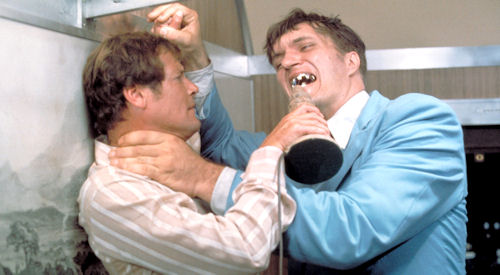
The Spy Who Loved Me, Roger Moore's third Bond movie, is a very entertaining one. This is where Moore finally defines himself as the slightly humorous Bond. It is said, according to a behind-the-scenes feature, that Live and Let Die and The Man With the Golden Gun featured a few moments where Moore's Bond is tough, like Sean Connery's, but The Spy Who Loved Me finally allowed Moore to play a more distinct Bond. While humor was never Ian Fleming's intention with the Bond novels, it can work in the films, if done right, as is the case here.
But that's not the only reason why I'm ranking this Bond movie at #7. This one features the most insane Bond villain of all: Karl Stromberg, a man who is so misanthropic that he's willing to wipe out humanity, not merely control it. (Yes, Sir Hugo Drax in Moonraker is the same kind of guy, but Stromberg has much more of a hint of menace in his expressions.) The scheme is so big that the explosive action to stop it, taking place inside a giant oil tanker and on the villain's Atlantis headquarters, is equally huge. Throw in the likable steel-toothed henchman Jaws (played by the late Richard Kiel, who passed away on September 10, 2014), the lovely female Russian spy Anya Amasova, the Lotus Esprit car that can convert into a submarine, and much more, and you have a Bond movie to remember.
#6
Octopussy (1983)
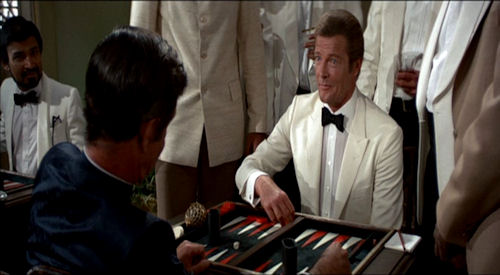
Given that it stars Roger Moore as James Bond, Octopussy does have its funny and out-of-place moments: Bond swinging on a vine while screaming like Tarzan, a fight with tennis rackets (with bystanders turning their heads back and forth like during a tennis match), Bond using a video camera to zoom in on a woman's cleavage ("Really, 007!" Q exclaims), and even Bond dressed as a circus clown. All of this would make you wonder why I rank Octopussy highly and consider this one to be Roger Moore's best Bond movie. The reason is not actually the humor, but rather everything else.
Let's start with the action. It's hard to argue that flying an Acrostar jet through an airplane hangar, hanging onto the side of a moving train, hanging onto a plane in the air, and fighting a man with a circular saw yo-yo are unexciting, because they are very exciting to watch. Also, the main villain's plot is related to the Cold War and can instantly result in thousands of deaths, something Bond must stop at all costs. Best of all, there is more romance in this one than most other Bond films, when you consider the title love song "All Time High" by Rita Coolidge and the scene where Bond forcefully kisses Octopussy, who quickly succumbs to his advances.
#5
Licence to Kill (1989)
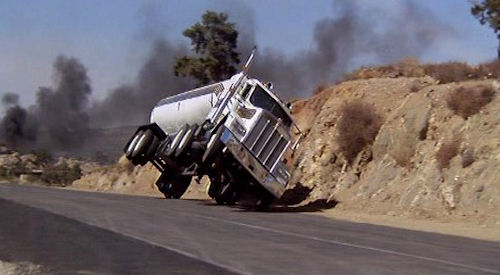
If you don't think Licence to Kill is a good movie because Bond takes on a different kind of villain (a drug kingpin, as opposed to a Cold War villain) or because the movie is way too dark and serious, you're missing the whole point of the series. James Bond is supposed to be a cold, ruthless agent, as laid out by his literary creator, Ian Fleming. A Bond movie that presents just that shouldn't be a surprise. Plus, Bond may be conceived as a Cold War hero, but his appeal goes beyond the Cold War. He is a hero for any age, because he is the kind of man we need to stop the world's biggest evildoers, and that includes drug kingpins like Franz Sanchez.
On top of that, Licence to Kill is perhaps the first Bond movie to be very original and deviate from the formulaic Bond movie plot. Instead of getting his mission from M at MI6 headquarters, Bond disobeys his latest orders in order to take down Sanchez in revenge, for mutilating his friend, CIA agent Felix Leiter. This departure is something the series definitely needs if it wants to stay fresh. Even the Bond Formula can become, well, formulaic. I don't want James Bond to forever be a rogue agent, but having him going rogue at least once in a while breathes new life into the series. With this, plus Timothy Dalton's performance as Bond and Robert Davi's equally superb performance as Sanchez, Licence to Kill is one of the best James Bond movies.
#4
Casino Royale (2006)

I never thought I'd see the day when Casino Royale, Ian Fleming's thrilling first James Bond novel, would be adapted into a film that is part of Eon Productions's official Bond series. Not only am I happy that it has finally happened, but also it was made very well. Just when the series started delivering only Bond movies that are entirely not based on an Ian Fleming book, Casino Royale comes along to bring the novel to life while set in the world of post-9/11 international terrorism, not the Cold War of the 1950s. As someone who read the book before seeing the movie, I was thrilled that it faithfully included the torture scene and the last line of the book, both of which are essential.
This movie is also the first time that gambling is crucial to the plot. In previous Bond movies, there are brief card game sequences just to show Bond's taste for the casino setting. Here, Bond has to win big in Texas hold'em poker so that he can put an end to Le Chiffre's efforts to transfer gambling winnings to terrorists. The moments of Bond losing money, needing more to stay in the game, and possibly winning it all are quite thrilling. As for the rest of the Bond formula, the most basic elements are there. Eva Green as the Bond girl Vesper Lynd is great, and the action scenes at a construction site in Madagascar and the runways of the Miami International Airport are very intense and exciting. Daniel Craig fits right in as a physically and mentally hardened James Bond.
#3
The World Is Not Enough (1999)

The only element of The World Is Not Enough that Ian Fleming himself conceived was the title. Or rather, the Bond family motto "the world is not enough," which was used as the title for the 19th James Bond movie. I say this because this Bond movie has plenty of great suspenseful moments, from the villain Renard holding hot rocks to Bond's torture in a garrote, as if Ian Fleming himself came up with all of this. I'll even go as far as to say that I think Fleming would love this movie if he were alive to see it. Besides the suspense, Pierce Brosnan shows a tough side not seen before. He may not be Timothy Dalton or Daniel Craig, but the scenes that depict him holding a gun while tensing his eyes and mouth show that James Bond means business.
In addition, the action is just awesome. The long boat chase on the River Thames, before the opening credits sequence, sets the tone for all the other action scenes to come, including the ski chase, the ride inside an oil pipeline, the shootout at a caviar factory, and the climactic action scene. And as icing on the cake, David Arnold's soundtrack for these scenes is phenomenal. I don't know if these action scenes would be as exciting without his music to go with it. He has done such a great job as composer that I think The World Is Not Enough is his best Bond soundtrack, with the Tomorrow Never Dies coming in as a close second.
#2
Goldfinger (1964)
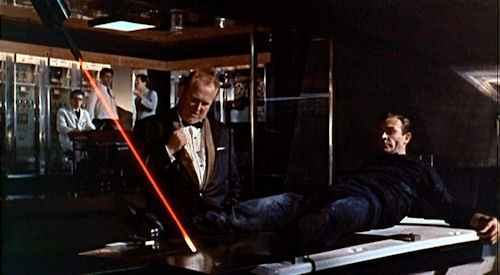
What can I say? Goldfinger is the quintessential James Bond movie, where the Bond Formula is done perfectly. How can we not admire the Aston Martin DB5 with all of its wonderful features, the leading Bond lady Pussy Galore, the doomed Bond girls Jill and Tilly Masterson, the silent henchman Oddjob with the deadly sharp hat, the avaricious megalomaniac Auric Goldfinger, the plot targeting Fort Knox, Shirley Bassey singing the title song, John Barry's soundtrack for the film, the thrilling pre-credits sequence that has nothing to do with the rest of the movie, Goldfinger's habit of cheating in gin rummy and golf, and the threat of a laser burning Bond's crotch while he is strapped to a table with his arms and legs spread apart? This movie has it all, and every time I see it, I can't help but have a big smile on my face.
This Bond movie is so good that the marketing of James Bond and Goldfinger tie-in merchandise and toys became as big, if not bigger, than the movie itself. Decades later, film critic Roger Ebert would write a Great Movie essay on Goldfinger, and the American Film Institute would list Auric Goldfinger at #49 in its list of top 50 movie villains (not to mention James Bond from Dr. No at the #3 spot in AFI's top 50 movie heroes list). Really, the only sad thing about the Goldfinger phenomenon is that Ian Fleming lived to see the making of the film, but died before its theatrical premiere and the massive excitement that followed. All of this is why Goldfinger had been my favorite Bond movie for years. That is, until one film came along to take over the top spot...
#1
Skyfall (2012)

There are so many great things about Skyfall, the 23rd James Bond movie, that I am more inclined to tell people to read my review of the movie (through the link directly above) than to repeat what I already said in it. Therefore, for this retrospective look on the first 50 years of the James Bond film series, I'll try to focus on making additional comments about Skyfall. First off, this is the only movie where, given the title sequence and the action taking place before it, the notion of James Bond finally meeting his death is a real possibility. No longer is he a hero who is seemingly immortal. Rather, he is a vulnerable human who can get hurt badly. Along those lines, the notion of M's career finally coming to an end is also a real possibility. The relationship between Bond and M in Skyfall is something we have never seen before in the series.
While Daniel Craig is not the handsome James Bond we've been accustomed to, he is, however, the tough James Bond of Ian Fleming's books. So forget about comparing him to Connery, Lazenby, Moore, Dalton, or Brosnan, or criticizing the hair that has been cut very short. Just enjoy the ride as it goes into territory never before explored in any of the previous Bond movies. Also, Javier Bardem does a fine job playing the villain Silva, after winning an Oscar as Best Supporting Actor for
No Country for Old Men. (Yes, Christopher Walken also got the same Oscar for
The Deer Hunter before playing Max Zorin in A View to a Kill, but his performance as a Bond villain doesn't come close to Bardem's.) Basically, if you love James Bond, you owe it to yourself to watch Skyfall. As Roger Moore said in a 2012 interview, it is "the best Bond ever made."
Anyway, I hope you enjoyed reading my thoughts on the James Bond movies after the 50-year mark of the series has gone by. I do not know what exactly is in store for James Bond, but based on my trip down memory lane, I am confident that what we will get is more of what we love (action, women, exotic locations, etc.) mixed in with plenty of creativity and imagination. So let's raise our martini glasses and make a toast to another 50 years of James Bond, who will no doubt return to thrill us all.
